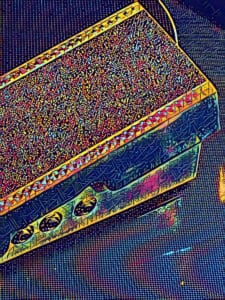As an Amazon Associate Playpedalsteel.com earns from qualifying purchases. This page contains affiliate links.
The volume pedal you use for pedal steel will affect your tone, if even just slightly. Try to use a volume pedal designed for pedal steel guitar to ensure that your amp is receiving the frequencies, timbre, and dynamics of the instrument that truly reflect the instrument’s capabilities sonically.
A volume pedal for pedal steel guitar is often used to sustain the notes played, much like a modern piano’s sustain pedal, and can be used for a smoother continuity between notes and slides.
By slightly hiding the attack of the picked notes with the volume pedal, and using a bar for vibrato, the volume pedal can be used to produce a shimmering, crying effect. This can emulate the human voice in a very detailed, unique way; by creating sonic nuances related to dynamics, delay, and equalization.
Usually the volume pedal is used with the right foot, underneath the steel guitar. The player puts their foot on top of the pedal, with the heel of the foot close to the ground.
This raises the toe of the pedal higher than the heel, much like you have your right foot angled over your gas pedal when driving. This allows you to push the pedal forward, in a smooth rocking motion, to raise the volume of the notes played.
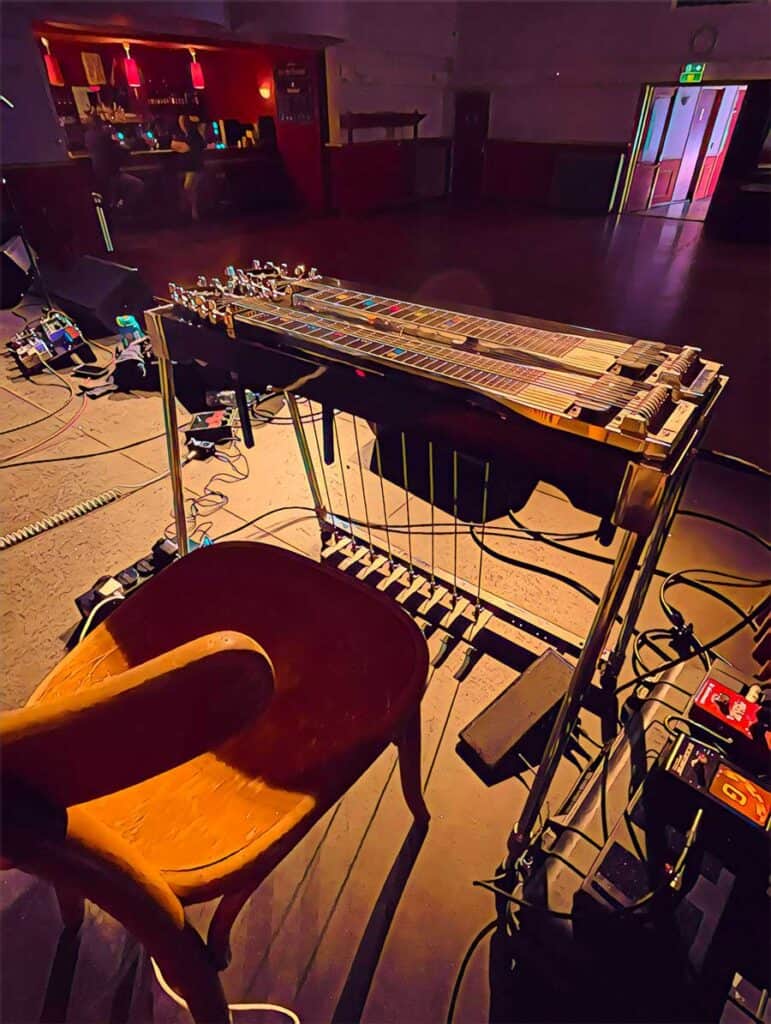
If you think about it like driving a car, then when you push the gas pedal forward with your toes (pedal to the metal!) you are activating the volume pedal and raising the volume of the signal.
A lot of volume pedals on the market aren’t designed for pedal steel guitar, but rather acoustic or electric guitars. Because of this, they often can’t sonically reproduce the full frequency spectrum of the pedal steel guitar, and you’ll notice frequencies lost mostly in the high end, especially on the E9th tuning’s 3rd string.
Although most volume pedals aren’t made for pedal steel, you may find that some of these still work well for it. Check out the volume pedal’s frequency response range if possible, and also the physical size and profile of the pedal. You want to make sure that your right leg can fit under the pedal steel when it is on the volume pedal, and that the profile of it allows you to comfortably use it.
Let’s take a look at more things to consider when using a volume pedal for pedal steel guitar. Here’s what we’ll learn in this article…
Different Types of Volume Pedals for Pedal Steel
When considering what type of volume pedal to use for steel guitar, look at the differences between active and passive volume pedals. You can begin discovering these differences by looking closer at passive volume pedals like Goodrich makes, or pot-less active types like Hilton volume pedals. I’d also recommend trying both types with your pedal steel guitar and your amplifier, if possible.
Both active and passive types of volume pedals have their pros and cons. I own and use both types, depending on the situation.
Passive Volume Pedals
Passive volume pedals, whose components contain a potentiometer (often called pot), don’t need to be powered or plugged in. These passive types of volume pedals can be great in terms of functionality and sound.
You will often get a warmer, down-to-earth, more tube-like sound when using them for pedal steel. I’ve used a passive volume pedal for years, and because of its tone and feel my favorite is Goodrich’s H-120 Volume Pedal (click to see it on Amazon).
Many passive volume pedals can have a nice sweep feel to them because they use a string system, which can often feel more natural and smooth for the right foot. Also, passive volume pedals don’t need to be powered in any way, so there is no need to plug them in which is nice.
On passive volume pedals, every so often the pot will need to be replaced, much like an oil change for your car. You’ll know it needs replacing when you hear a scratchy, clippy distorting sound coming through your amp every time you vary the volume level with the pedal. If you decide to replace the pot there is information and videos available online that show how.
Active Volume Pedals
Active volume pedals have an electronic circuit, and need to be powered or plugged in. These pedals don’t have a potentiometer, and they will usually come with an appropriate power supply.
If you use a high-quality active volume pedal, you can often get a pure, definitive sound and tone. This can be great for pedal steel, especially in the modern studio, where you often want more definite control and isolation of your sound.

Some of these pedals also allow the player to vary the action, or output level of the pedal, so you can alter your heel position to suit your playing style which is nice.
Some power supplies can be fragile, short in length, and can accidentally get unattached from the unit. However, these pedals can last indefinitely with a working power supply. Again, like an oil-change for your car, you may find yourself needing to replace the power supply every so often.
How To Use A Volume Pedal for Steel Guitar
Since pedal steel guitars have hot outputs (pickups) by design, when the pedal steel’s volume pedal is fully activated, the signal coming out of the amp will be very loud. Too loud!
This is why most volume pedal techniques for steel guitar require a player to keep the heel of their foot and the pedal lowered, keeping the signal at a slight percentage of fully activated. For instance, keeping the volume pedal at 25% of the level between off (heel down) and on (toes down), is a good starting point for working with sustain on the volume pedal.
As soon as a note(s) is picked, the pedal steel player gradually increases the volume, in effect keeping the note(s) floating and shimmering in quality. The volume pedal swell’s timing can actually keep the notes close to the same dynamic level as when they were first picked, giving the notes a long life musically; they become more sustainable.
The notes can last longer, be more interactive with reverb and its tails, and also produce a crying, atmospheric quality.
A pedal steel is often known for the sound of its smooth glissandos between notes and chord inversions, enhanced by the proper use of the volume pedal. The sound we usually associate with pedal steel guitar is in large part due to volume pedal technique, and bar vibrato.
Volume Pedal Technique for Pedal Steel Guitar
There are various ways to practice volume pedal technique for pedal steel guitar. Focusing practice time and effort on developing good volume pedal technique, will improve a pedal steel player’s skills on the instrument. The volume pedal is an important part of the pedal steel player’s “voice”, and has a definite impact on a player’s style, tone, and character on the instrument.
When first playing pedal steel with a volume pedal, it is a good idea to just get comfortable with having your foot on the pedal, in a proper position and angle. There are so many simultaneous variables involved with playing pedal steel; slowly getting more comfortable with each aspect of playing will reap the greatest rewards for a player.
To begin getting comfortable with the physical aspects of using the volume pedal, having a base position, or starting point to work off of, will be beneficial. Most things are built from the ground up, and having a strong foundation to work on can go a long way.
Try to have your foot at this “starting point” on the volume pedal for the majority of your playing. When you attack or pick the strings, gradually engage the volume pedal, and use it as a sustain mechanism and to produce longer tones.
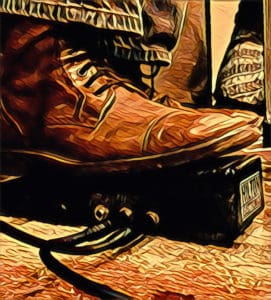
The “starting position” of the pedal usually doesn’t hide the attack when picking and playing notes on the pedal steel guitar. The attack is the immediate sound and timbre you hear as soon as the string is picked. This is not the note itself per se, but more of the actual sound of the picks striking, or attacking, the strings.
It is common to hide the attack of your notes with the volume pedal when you are still developing your right hand technique. It is best to avoid this, as great sounds and tone can come from the pedal steel with a bolder approach – picking strongly, while using the bar and volume pedal to reinforce this via sustain, will have a more impactful impression on listeners.
Professional players often have solid, full tones because they pick strongly. Right hand picking and blocking can be a great vehicle for expressing notes through the pedal steel when used along with the volume pedal.
The starting position will vary depending on the volume pedal brand and type, the amplifier’s gain settings, the pedal steel guitar itself, and how hard you pick. I’ve found from playing, and watching other players’ use of the volume pedal, that having the volume pedal about 25% engaged is a good starting position (at 0% there is no volume coming through the signal, at 100% there is full volume from the signal).
This leaves a player plenty of headroom for sustaining the notes by gradually engaging the pedal, and probably doesn’t hide the attack too much. Even volume swells that produce that classic “floating, ethereal, crying sound” will have a slight attack audible on those notes before they are sustained and swelled upon. Are you having a swell day so far?
Having the volume pedal steadily hovering around this 25% when playing or not playing, will begin crystallizing the muscle memory in your right foot. Eventually a player will want their right foot to act as the dynamic voice for the instrument, much like great singers can raise or lower their voice as the music calls for.
If you hear a louder or softer note in your mind, and you want to communicate it through the instrument, your right foot can instantly be able to follow these dynamics without thinking. This will take time and practice, but will be worthwhile.
The sounds associated with the steel guitar and proper manipulation of the volume pedal, are what get many players interested in playing pedal steel guitar in the first place. So have fun with it too, as it is an integral part of the pedal steel guitar’s language!
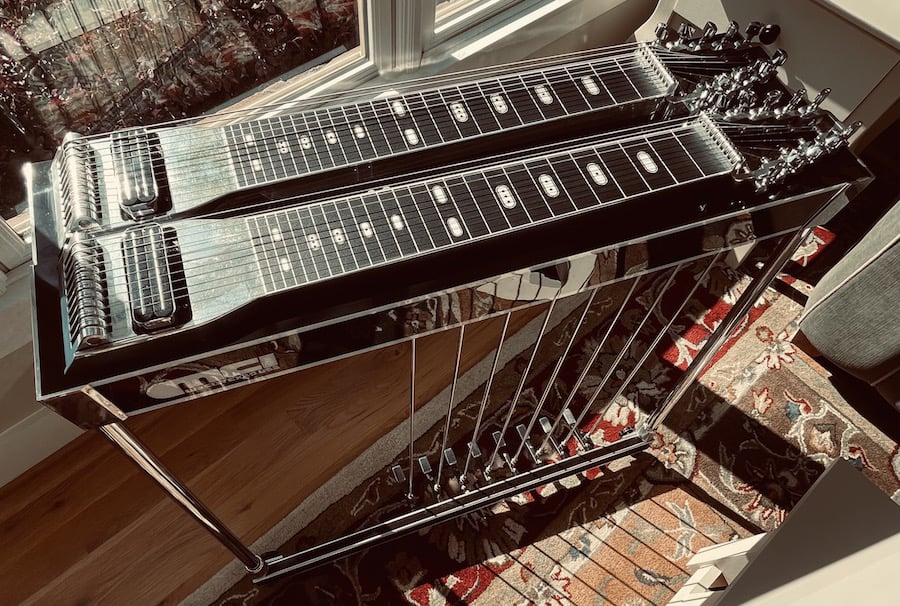
Keep in mind that having your foot on the volume pedal, at the 25% starting point, may be uncomfortable at first. The right foot’s muscles may get tired quickly, and want to rest on the ground or another position, however it is usually best to try to power through this as long as comfortably possible.
Over time these muscles will develop and strengthen accordingly, and you will be very comfortable with leaving your foot on the volume pedal in the correct position for as long as you play.
Like running a marathon, train these muscles gradually so they can be ready for the actual race. When race day comes, you will have a leg up on the volume pedal, literally and metaphorically.
Speaking With The Volume Pedal
How a player chooses to utilize their volume pedal will determine just how it becomes an extension of their voice on the instrument. Raising and lowering the volume of sound is one of the most fundamental and basic aspects of music, a means of expression and inflection in language and communication that has been with humans for a long time.
Using the volume pedal effectively will articulate certain aspects of the music to a listener’s ears, and it can be a wonderful tool and pedal to have with pedal steel!
Thanks for checking out this page, hope it is helpful and makes playing more enjoyable! If you’re interested in diving deeper into playing E9 pedal steel, check out these resources and guides…
The Chord Guide for E9 Pedal Steel (E-Book, Digital Download)
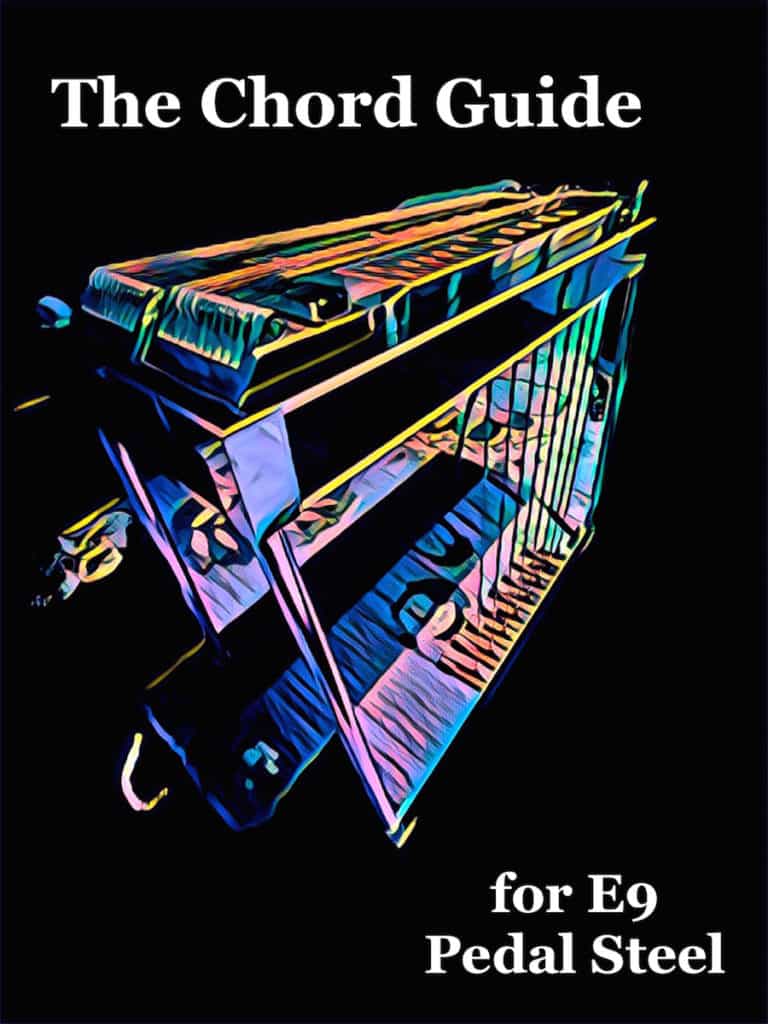
Learn the chords on the E9 neck in a way that makes playing simple and enjoyable…
- Almost Every Chord You’ll Ever Need for E9
- Intuitive and Easy to Use
- Make Use of Pedal and Lever Combinations
- Example Tabs of Chord Movements
- Easily Utilize the Nashville Number System
- Great For Any Key and Style of Music
Includes a bonus section of over a hundred pages of extra chord charts, key references, and more!
You may also like…
200 Country Riffs & Licks for E9 Pedal Steel
Add these country licks to your playing repertoire…
- Easy to Read Format
- Includes Rhythmic Notation
- Playing Over Chord Changes
- Great for Country, Alt-Country, & Honky-Tonk Styles
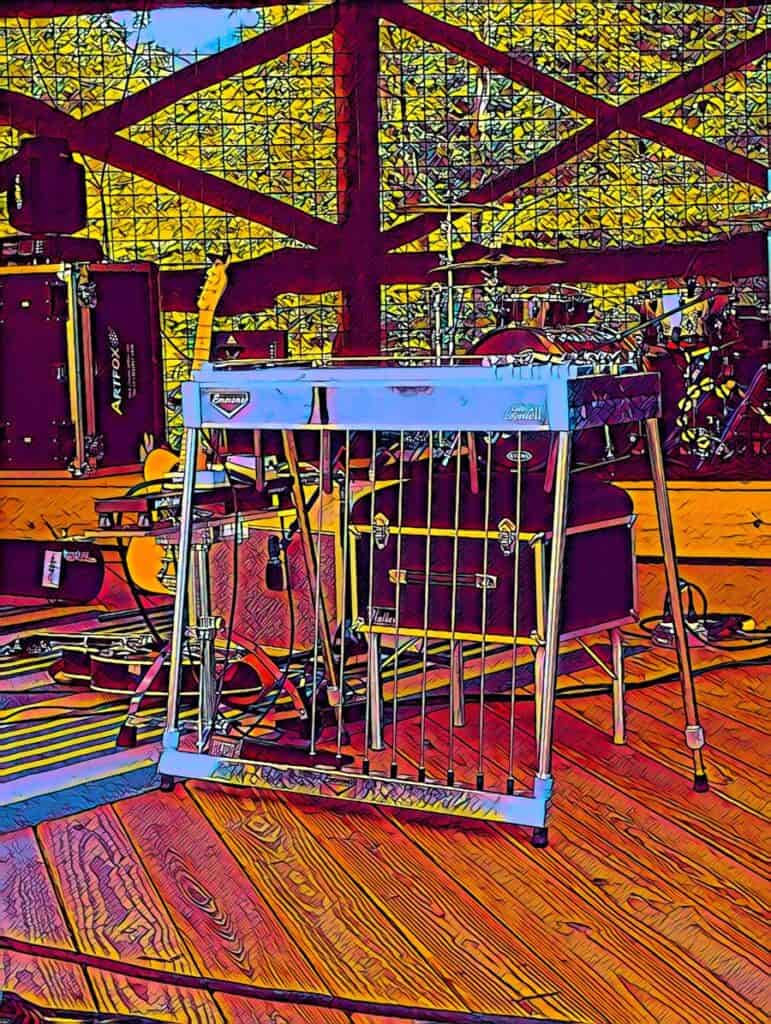
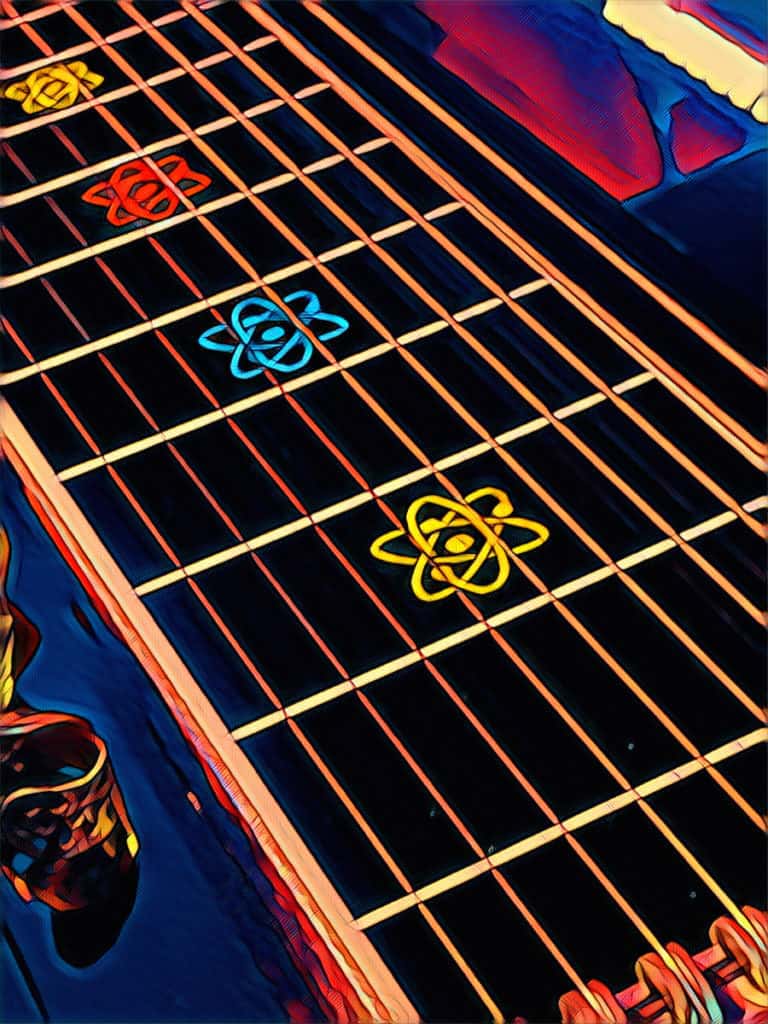
The Scale Book for E9 Pedal Steel
Over 1,000 Pages with Tabs and Diagrams!
- Easy to Use Reference for Practicing
- All Major and Minor Pentatonic Scales, Modes, Major Scales
- All Keys, and Covers the Fretboard
- Includes Pockets of Scales
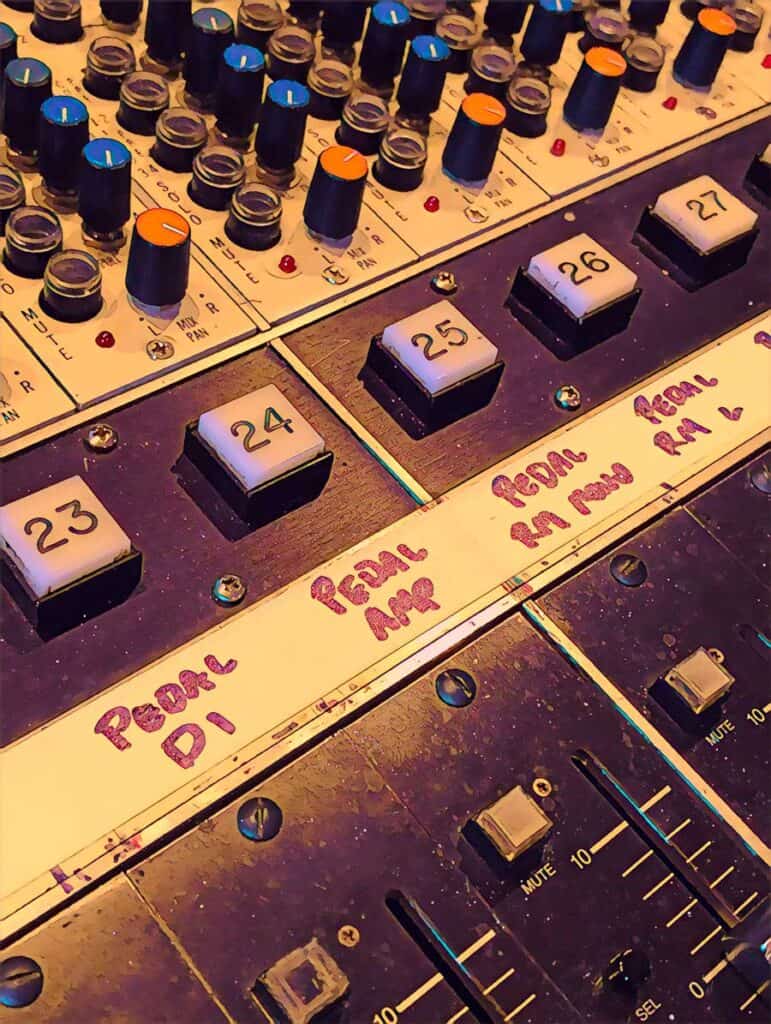
Harmonized 6ths
- Hundreds of Riffs, Licks, and More
- How To Play Sixth Intervals on the E9 Neck – Over Any Chord
- Utilizes The Pedals and Knee Levers

Right Hand Picking & Blocking
- An In-Depth Guide to Picking and Blocking
- Perfect Your Technique
- Includes Graphics, Illustrations, & Practice Exercises
If you’re interested in using delay and effects pedals with pedal steel, click here…
